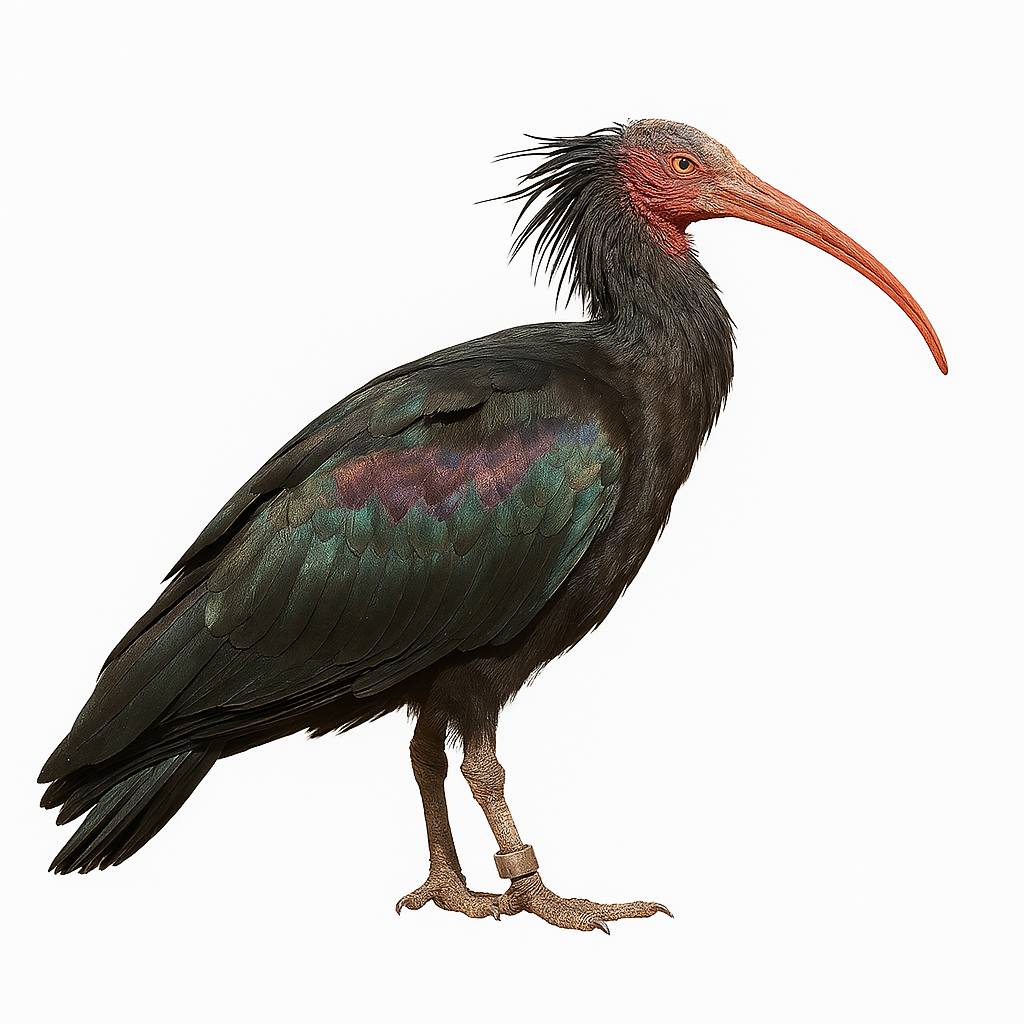Observe and photograph a species in its natural habitat
Learn where and when to observe a species in the wild, how to recognize it in the field, and what habitats it lives in. Get photography tips adapted to its behavior and capture stunning images without disturbing the animal. For full details, open the complete profile in the WildlifePhotographer app.
Bald ibis
Scientific name: Geronticus eremita

IUCN Status: Endangered
Family: THRESKIORNITHIDAE
Group: Birds
Shyness: Suspicious
Safe distance: 50 m
Breeding season / Courtship: 01.03-31.05
Gestation: N/A
Births: 01.06-31.07
Habitat:
Dry mountain areas, open forests, and farmland in parts of North Africa and the Middle East. The Northern Bald Ibis is also observed in conservation zones
Description:
The Bald Ibis is a large migratory bird, easily recognizable by its dark plumage and bare head, adorned with a light down. It measures about 65 cm in length, with a wingspan of 1.3 to 1.4 meters, and weighs between 1.5 and 2.5 kg. Its plumage is brownish-red, with metallic green and purple hues that appear in the light. The head of the Bald Ibis is almost completely devoid of feathers, except for a small tuft of feathers on the top. It has a long curved beak, adapted for probing the ground in search of small invertebrates, worms, and seeds. The Bald Ibis primarily inhabits wetlands, marshes, and river valleys in the Middle East, North Africa, and parts of Europe. It is primarily herbivorous and insectivorous, feeding on aquatic plants and small animals found in marshy areas. The Bald Ibis is a migratory species, moving in groups during the breeding season and winter. While the species has been severely reduced in its range, conservation efforts have helped maintain small populations in certain areas. However, it remains vulnerable to habitat loss and human disturbance.
Recommended lens:
>=300 mm
Photography tips:
Use a telephoto lens to photograph the bald ibis, especially when flying in formation or resting on branches. Soft morning or evening light is ideal for capturing its colors and distinctive details.
Be discreet and respect their space to avoid disturbing their natural behavior, especially during the breeding season.
Ready to take action?
Choose your platform and start your free trial today



